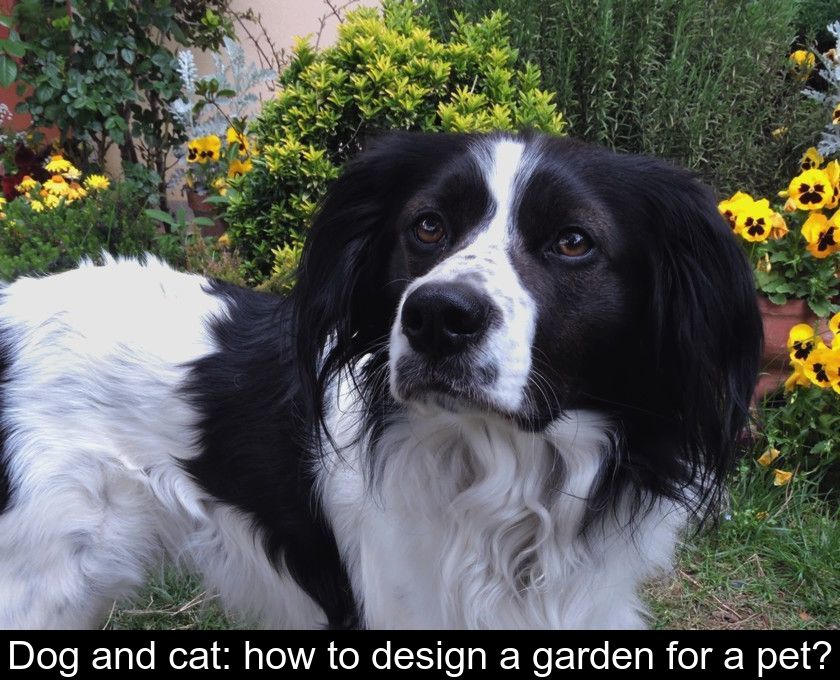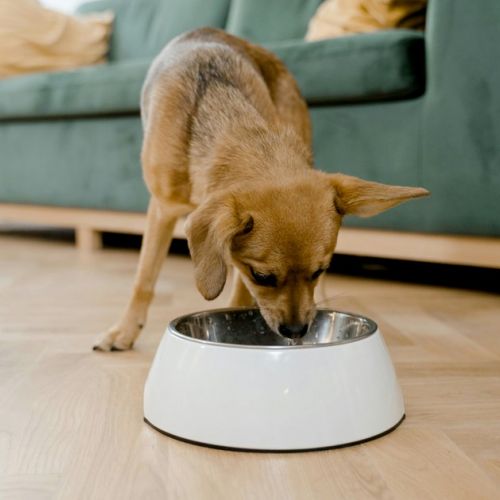Dog And Cat: How To Design A Garden For A Pet?
Having a garden is a real plus when you have a dog or cat. However, if you want your pet to be able to run around safely, you need to adapt the surroundings of your house. We explain how to create a garden for a dog or a cat.
Bounding the space and gardening organically
If you're wondering how to set up a garden for a pet, remember that the first thing to do is to secure that space. Carefully delineate and fence off the part of your yard that you want to dedicate to your pet, and avoid using any chemicals in that part of your garden.
It may be difficult to keep your cat from snooping in the surrounding gardens, but in theory it's safer not to let him. Gardens are places full of temptations and dangers for pets, especially if your neighbors are using crop protection products like rat poison or slug pellets!
If ingested, a dog or cat could die. If your pet is bleeding, convulsing or staggering, you should call the veterinarian urgently.
Avoid plants that are toxic to animals
Crop protection products are not the only hazards for pets in the garden. Some seemingly harmless plants are toxic to our four-legged friends.
So if you want to build a garden for a dog or cat, you need to know and avoid plants that are toxic to pets. Here are some of them:
- the love apple tree
- rhododendron
- red balls of lily of the valley
- Wisteria
- the oleander
- the laburnum
- hyacinth
- azaleas
- the yew
If ingested, these plants can cause digestive symptoms such as vomiting, but also cardio-respiratory problems and, in the most serious cases, tremors and coma. If your dog has been vomiting plants and is showing some of these symptoms, you should consider it an emergency and take him to the vet.
Also, other plants with sharp stems can injure a young puppy. This is especially true of the stems of pampas grass. To avoid injuries in the pet's mouth, it is best to get him used to playing with a dog toy rather than a stick.
Beware of parasites
Parasites are another danger to pets in the garden. Ticks love to hide in tall grass while augusts (which are microscopic spiders) can proliferate in the garden even when the lawn is well mowed.
To try to keep these undesirables at bay, you can plant repellent-smelling lemon balm when you're setting up a garden for your pet.
But be careful: vigilance is still required! After each trip to the garden, a quick inspection is in order. Check your pet's skin for a tick or orange spots that are clusters of Augustus larvae.
Augtists attach themselves to the folds of the skin and cause intense itching. If your dog is affected, you should treat him as soon as possible with a mite spray.
Designing the garden for comfort
In addition to tips designed to keep your pet safe, here are some ideas for amenities that will make your pet happy and more comfortable.
When designing a garden for a pet, consider:
- provide him with shade in the summer, by choosing a corner of the garden with a tree or shrub
- provide him with water ideally by installing a small garden fountain as some cats prefer to drink water on the move
- provide him with games, for example logs of wood where your cat can scratch his claws.
Finally, if you want your cat to be the happiest of felines, consider seeding some grains (oats, wheat or barley) that will help him purge and digest hairballs better.
You can also sow catnip (the famous catnip!) as cats love to roll around in it. Contrary to what some owners think, this plant is not toxic for animals.





